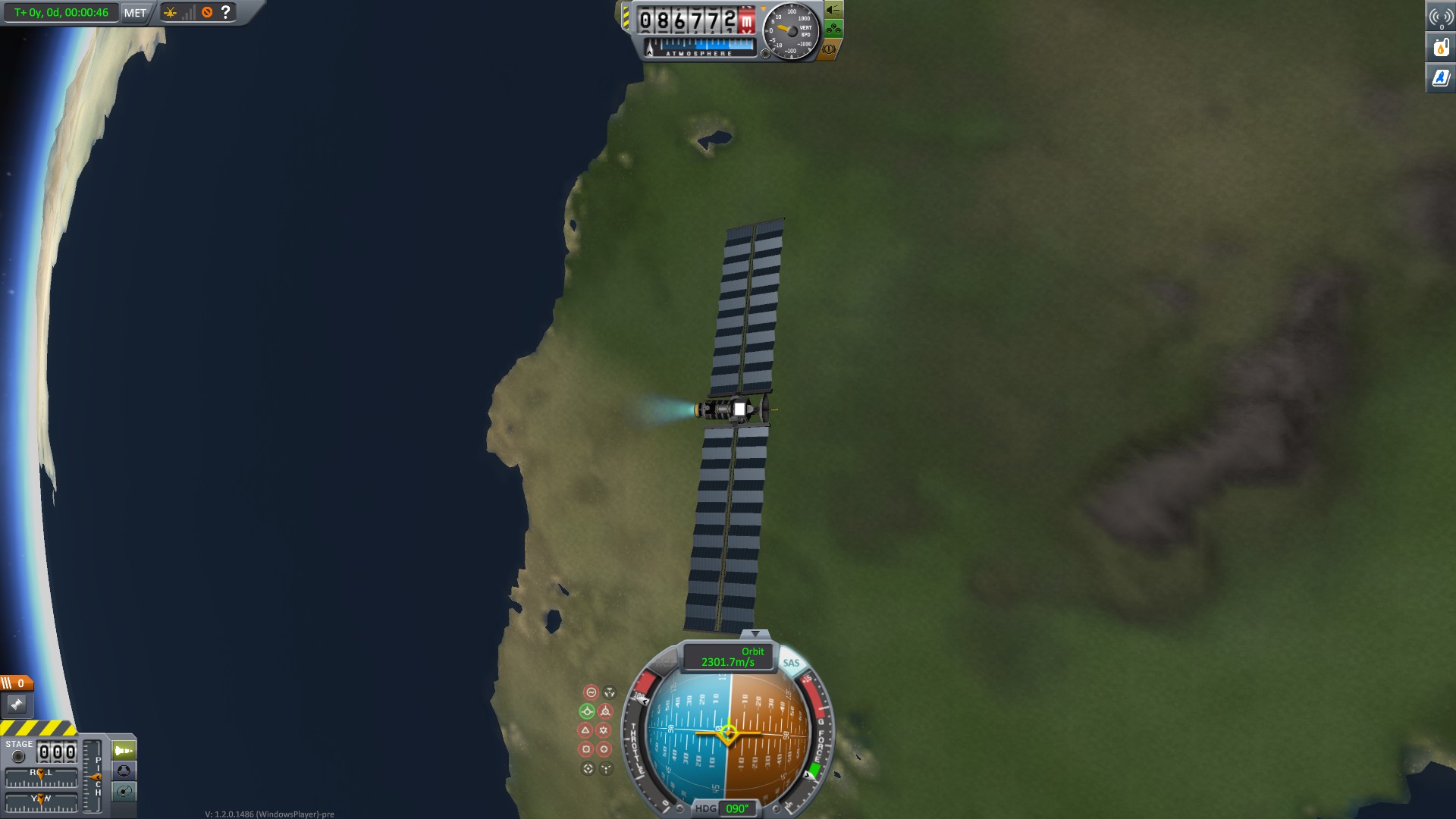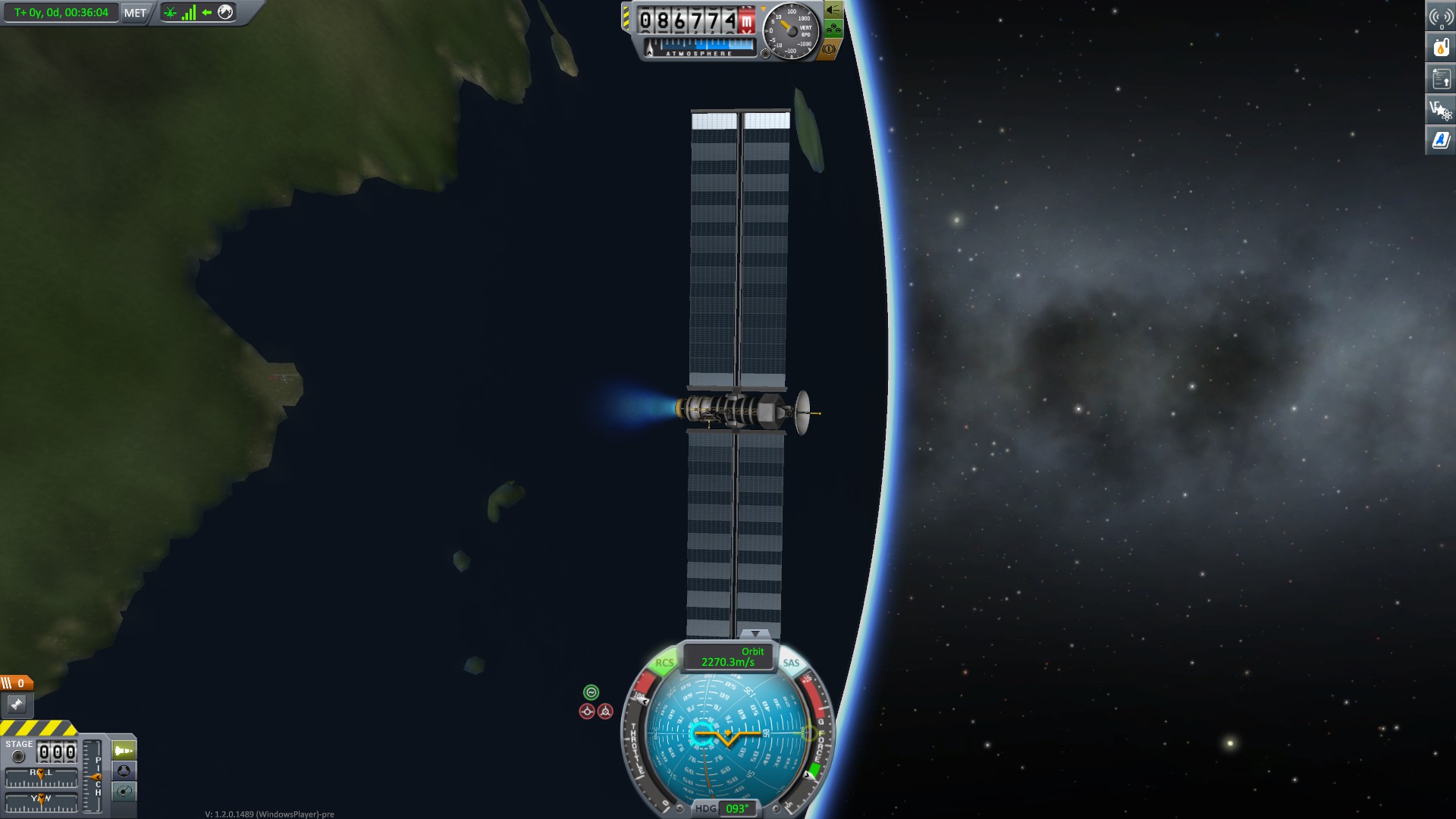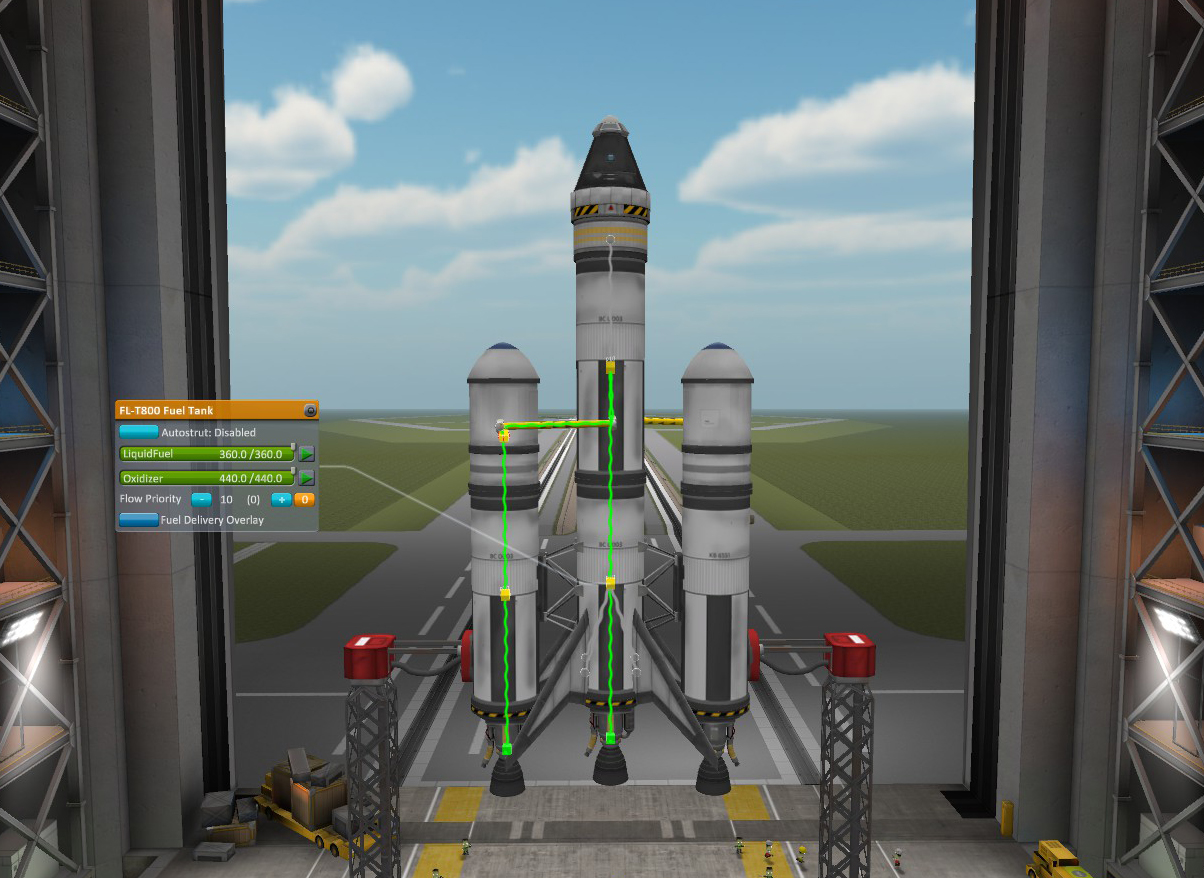The next big update for Kerbal Space Program has almost arrived and with the magic of Open Pre-Release, we were able to get a look at all of the new mechanics, new parts, and a slew of changes and bug fixes. The biggest changes have come to probes, antennas, and debug menu. The recently redesigned wheels also got rework along with The large upsides of the patch are offset by breaking most mods. Given some of the discord in the community and abandonment of mods, this is very important to note before you update. Those running a completely stock game should not be affected by this update outside of mechanical changes.
SATELLITE NETWORKS ACTUALLY MATTER NOW
When you first fire up the new 1.2 patch, the largest change to your game will be to your use of probes and antennas. Users of the popular Remote Tech mod will find the new probe mechanics familiar, but tweaked to be slightly less punishing and finicky. The now vanilla implementation requires a connection back to the Kerbal Space Center (KSC), or an appropriately equipped Kerbal, in order to function. Probes and command pods will have a small built-in antenna to connect to the new CommNet, but a newly implemented line of sight (LOS) mechanic and signal strength mechanic have been implemented as well. As a result, there are more antenna choices.
In order to operate probes beyond LOS or signal range, relay antenna networks will have to be established. The relay antennas will connect to probes to command points, the KSC or Kerbal mentioned before, so long as ends of the signal are visible to the relay point(s). Unlike in Remote Tech, the antenna do not have to be pointing at each other; they only have to be within each other’s line of sight and range. The game will also switch relays or control points if the first one becomes occluded by an orbital body. Fail to plan for the range or planetary alignment, and you are going to run into control issues.
Firing the ion thruster at the prograde vector is possible, even without the signal.
This control is another place that the Remote Tech mod is far more brutal than this new stock mechanic. If a probe losses connection, there are still some things that you can do: you can go full throttle, cut throttle, toggle action groups, stage, and point using autopilot settings. Fine control of throttle and direction remain disabled, alongside setting and deleting maneuvers. Speaking of maneuvers, setting maneuvers will now be something only available to command pods with pilots or connections to command points. If the maneuvers are already set up when you lose connection, you will be able to complete them like normal but you will not be able to delete them. As we are already discussing control, despite having small antennas, unmanned command pods will still be dead in the water. Or space, if that is where you find yourself.
With the new signal changes, the UI needed some updating to give players a better idea of what the game was doing. Next to the time warp and mission time, you will find a new module displaying your signal strength in very familiar bar form. The module also shows you what you are connected to; we are directly connected to Kerbin in the case of the image above.
Notice the full connection in the new UI module, also firing off the normal marker.
The antennas will also have a new feature called KerbNet. KerbNet is access through the right click menu on a probe body or a capsule. Depending on the antenna equipped, biomes, Easter Eggs, or a height map will be visible in a pop up window. Also in the window are options to zoom (FOV slider), change map type, or even set a way point, much like the way points added by contracts. Accessing the right click menu of a probe will also show a few other new features. If you’ve ever warped too far and had your probe burn through all the battery power for no explicable reason, the hibernation feature will be a welcome change. You can change between a few different settings, but the “Hibernate in Warp” is my favorite. Not limited to just probes, there is also an option to refocus on any part of our spacecraft. Clicking on “Aim Camera” will center on that part—wonderful for those awkwardly long spaceships or asymmetrical space stations.
ADVANCED TWEAKABLES AND OTHER MENU TOYS
Hidden away in the settings menu is a new feature that is not as prominent as the probe changes, but just as useful: Advanced Tweakables. In the Vehicle Assembly Building and Space Plane Hangar, you will find new options after right clicking on many of the parts. The first feature is called Autostrut. Autostrut lives up to its name, adding invisible struts between the chosen part and either the root part or the heaviest part. Not quite as robust as the mod Kerbal Joint Reinforcement, and certainly not automatic, Autostrut is a welcomed addition that hasn’t shown any downsides. That is unless you have developed a Kraken Drive that uses phantom forces to propel the craft; you can keep the Autostruts disabled in that case.
Fuel flow has also been given some much needed love. The Advanced Tweakables menu brings up two new options when you click a few tank: Fuel Flow Overlay and Flow Priority. The Fuel Flow Overlay gives the vehicle designer a visualization on where the fuel in the selected tank will flow. This is more useful with space planes, but can help ensure your asparagus staging is setup properly. Where the Fuel Flow is helpful, the Flow Priority is game changing. No longer will designers have to worry about awkward fuel draining patterns causing instability in their crafts. Instead, you can change the priority for the fuel to be drained from tanks. In most cases, this means you can keep the fuel forward or upwards, draining from the back or the bottom, depending on your vehicle at the time. You can also keep fuel tanks draining at the same rate, now even with rockets. This won’t solve all poorly designed rockets, but it will certainly help some of the fringe cases make it to space today.
An example of the tweakables in a terribly named spaceship.
DEBUG MENU FACELIFT
The dirty cheating alpacas, modders, and people who like killing Kerbals for no reason other than the hilariously named feature, Whack-a-Kerbal, will have a mostly pleasant surprise the next time they press ALT-F12. While 1.0 brought some new features to the Debug Menu, 1.2 reworks many old features.
The previous two setting Hack Gravity toggle has been replaced with a slider, allowing the user to lessen or increase gravity in a more analog fashion. If that is not enough to get your for-instructional-purposes-only space station into orbit, there is also a watered-down version of the mod HyperEdit at your fingertips. There are also dozens of new windows incorporated into the menu that are not cheats, if cheats are not your thing. You can examine the physics, game performance stats, view loaded game assets, even create new Kerbals! Sadly it’s not all good news: the previously named Whack-a-Kerbal has been renamed as Object Thrower. That certainly leaves an opportunity to hope that will be fixed in 1.2.1!
THE FUTURE OF KSP
There are a number of other little changes in this update I didn’t get into, like parachutes that deploy when safe, science capsules to shoot experiments back to Kerbin for recovery, and new parts like the golden HECS II probe core. Fans of KSP will find this a great update to a already solid game. With the recent departure of several Squad members from the game, including the creator of the game itself Felipe “HarvesteR” Falanghe, the future seemed a bit uncertain for KSP. Promises that the game would continue to be developed were made, but the launch of a major patch like 1.2 is the best way to keep faith in the game alive. Old players of KSP will find new challenges with probes, new players will enjoy the help of biome mapping, new players and old alike will enjoy the more powerful tools afforded to them in the vanilla game. If the strong modding community can continue to develop new mods and update the existing ones, the future for KSP is certainly no less bright.




